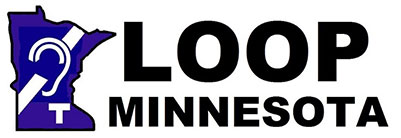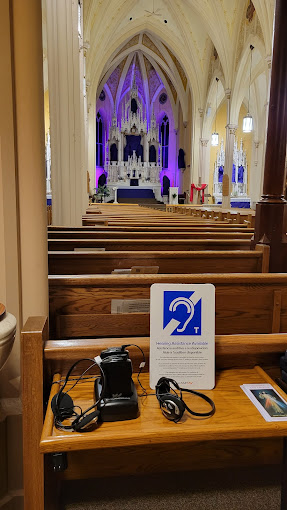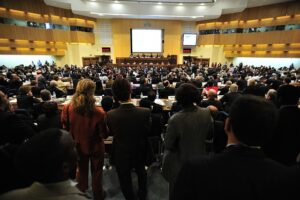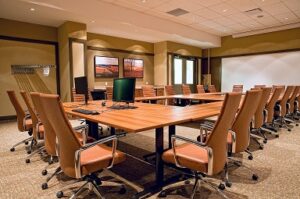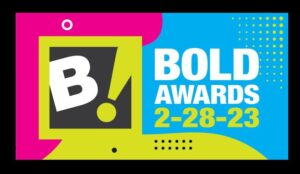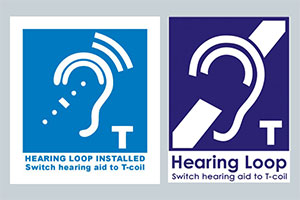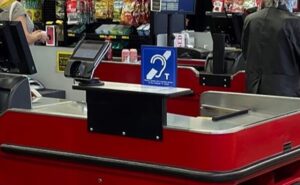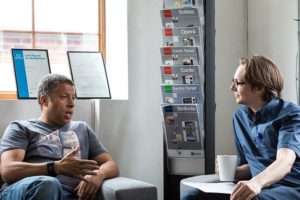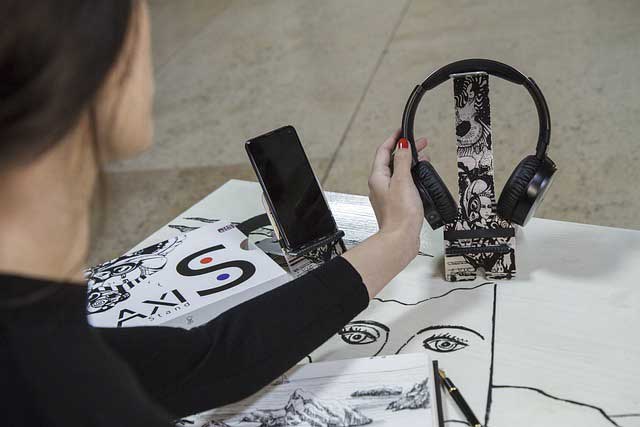By now, it is well known that Aging tops the list of the many causes of hearing loss. The older people become the more problems they have hearing and understanding speech in background sound. This seriously limits socializing for those who hope to find new friends and connections in Senior Living facilities, their new homes.
Sadly, it is not a given that Senior Living places meet the communication needs of the hard-of-hearing (HOH). This has become apparent during personal visits to such facilities. Also, Loop Minnesota gets requests for information about assistive hearing technology from residents.
Limits to participation and quality of life
At issue: Community & Activity locations often lack appropriate accommodation for those with hearing challenges. People feel excluded from participating in physical, religious and leisure activities. Maybe facilities count on residents having hearing aids. However, hearing aids also have their limits in noise-confused environments.
Hearing loss increases the risks for isolation, depression and even dementia. And so, one would expect Senior Living facilities to advertise Hearing Access technology prominently in ads that cater to older adults, their target population with varying degrees of hearing challenges.
Ask about available Hearing & Listening technology
Unfortunately, most people don’t think to ask about communication access when they choose their future homes. If possible, go for an on-site visit and see for yourself. Besides the marketing agent who is usually the “Tour” guide, ask to speak to the AV (Audio-visual) technician.
What kind of hearing accommodation is available? Who operates and maintains the system(s)? Are staff trained in their use? Do residents know that hearing assistance is available, and do they know how to use it?
Public Address (PA) systems are the most common. It was explained to me that they are easy to handle and have plenty of volume. However, louder is not necessarily better for those with hearing loss. It can actually make things worse.
That said, well-maintained and upgraded loudspeaker – or PA – systems are a good start. They also support the addition of other choices, such as hearing loops and/or neckloops to be used with T-coil-equipped hearing aids, FM (Frequency Modulation – basically a radio system), Infra-Red (IR) and Wi-Fi. These technologies can and will coexist for years to come. In the future, we will add the emerging Low Energy (L.E.) Bluetooth broadcast & receiving technology known as Auracast™ to the list.
And so, we have options and changes are happening even as I write this. However, the important thing is for Senior Living residents to hear now.
In the end, Bingo and Yoga for all!
Without access to communication, people can’t fully participate. And so, don’t be taken by surprise. Ask about assistive hearing technology. Be included – not excluded – in your new home. After all, it’s a matter of quality of life!
****
Also check out my blogs at https://hearing-loss-talk.com/
